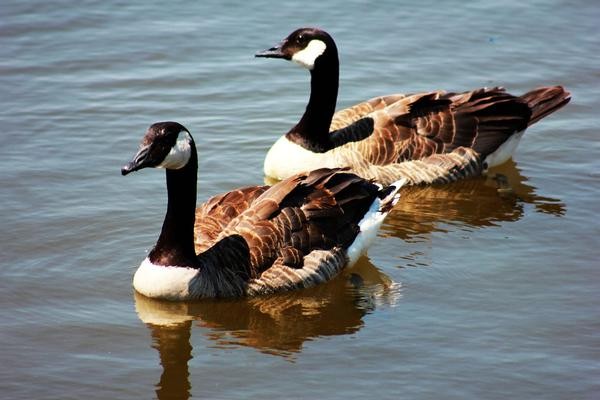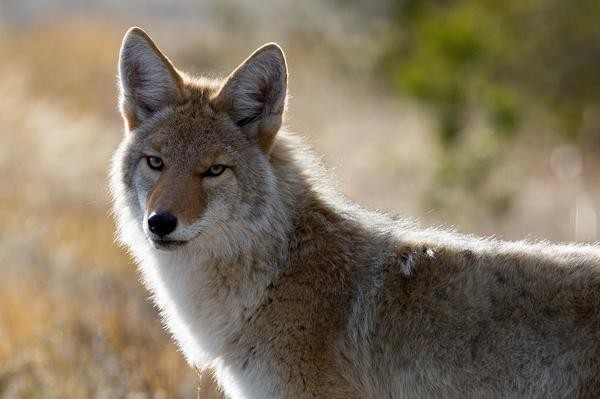There is currently no drinking water at the park. Restrooms and showers are fully functional.
Watchable Wildlife at Lyman Lake
 Simply because of the remote nature of Lyman Lake State Park, wildlife, birds, reptiles, and amphibians abound in this wide open beautiful Arizona destination in the northern foothills of Arizona's White Mountains. Wildlife has a way of making a trip even more special, with each sighting memories are made that can be called upon to reminisce about an amazing moment in time. Follow these tips to ensure your Lyman Lake adventure is filled with the sights and sounds of Arizona Wildlife!
Simply because of the remote nature of Lyman Lake State Park, wildlife, birds, reptiles, and amphibians abound in this wide open beautiful Arizona destination in the northern foothills of Arizona's White Mountains. Wildlife has a way of making a trip even more special, with each sighting memories are made that can be called upon to reminisce about an amazing moment in time. Follow these tips to ensure your Lyman Lake adventure is filled with the sights and sounds of Arizona Wildlife!
If visitors arrive to the park with the right gear, some area knowledge, and the right attitude, finding the local animals is a much easier task. First and foremost, a good pair of hiking shoes is recommended to hit the trails in search of wildlife and birds. Binoculars are also a very important piece of your wildlife viewing arsenal and can become an invaluable piece of equipment when that rare bird is across the lake, or baby deer are playing in the flowers a couple football fields away.
Many of these White Mountain birds and animals are crespuscular meaning they are most active during times closest to sunrise and sunset. By exploiting this knowledge, both amateur and seasoned wildlife watchers and birders will be able to see many animals and birds during times of peak activity. Head afield with binoculars, a camera, and perhaps a field guide as a quick, easy resource. Scan the distance during low light periods with your binoculars to look for bird and animal movement and close the gap once spotted. Approaching animals as they are undisturbed gives viewers a much better chance of getting close enough for great photos and a memorable experience. Please keep both yours and the wildlife’s safety in mind during your approach and don’t get too close!
Lyman Lake Birding
Common Birds Found at Lyman include the egret, great blue heron, black ibis, sandpiper, and curlew can be found wading along the shore. These shorebirds offer a great viewing experience from both land and water, are typically active, and typically prevalent enough for a great photo opportunity. On the lake itself, a variety of waterfowl enjoy both year-round and migratory stays depending upon specie. Common sightings of mergansers, grebes, mallards, and Canadian geese entertain visitors and the local population is supplemented seasonally with American wigeon, gadwalls, and northern shoveler.
Watching shorebirds and waterfowl is relatively easy to do and is so much fun, although it can eat up a majority of your day if you let it. Simply stroll the edge of the lake while looking for movement both on shore, and in the lake itself with either your eyes, or through binoculars. Shorebirds will use shallow sections of the lake to hunt and enjoy a little vegetation as cover while doing so. These birds can be fairly active as they run, dip, and dive while in search of their next meal. Waterfowl species may also be found near shore feeding on underwater vegetation, or they may be “rafting” in the middle of the lake. Rafting refers to numerous birds grouped together, much like a raft, and is a great photo opportunity in which to take advantage.
Take a look at Lyman’s eBird sightings list to find out which species have been using the park, then see how many you can locate during your next trip!
Other Wildlife
Mammals that frequent Lyman Lake and the surrounding White Mountain area include ground squirrels, cottontail rabbits, jackrabbits, raccoon, coyote, skunks and bobcats. Larger mammals in the area are mule deer, elk, and on occasion, pronghorn antelope.
 It takes a little more tact (or luck) to consistently watch some of the mammals of Lyman Lake State Park. Many are crespular in nature, although some are mostly nocturnal and prefer to live the active portions of their lives at night. Nocturnal creatures like coyotes, skunks, and raccoons, can still be seen during daylight hours, however, usually within an hour of dawn or dusk. Listen for the calls of the coyote and cautiously get closer to see them going about their day. Coyotes are fun to watch, and around the park, gotten pretty comfortable with people watching them. Please remember to keep your distance and observe from afar with optics like binoculars.
It takes a little more tact (or luck) to consistently watch some of the mammals of Lyman Lake State Park. Many are crespular in nature, although some are mostly nocturnal and prefer to live the active portions of their lives at night. Nocturnal creatures like coyotes, skunks, and raccoons, can still be seen during daylight hours, however, usually within an hour of dawn or dusk. Listen for the calls of the coyote and cautiously get closer to see them going about their day. Coyotes are fun to watch, and around the park, gotten pretty comfortable with people watching them. Please remember to keep your distance and observe from afar with optics like binoculars.
Larger mammals like mule deer can be seen browsing on area shrubbery at any point during the day, although they are most active early and late in the day. Their activity increases as the breeding season or “rut” approaches in December and January. The deer lose most caution during this time while they are focused on the propagation of their species and give visitors a chance to see them during this special time of year.
We hope this short guide will help you make more memories in White Mountain country, take some great photos, and generally increase the likelihood of an absolutely epic Lyman Lake experience! If you would like to learn more about Arizona's diverse wildlife species, check out this awesome resource!
Looking for even more Arizona wildlife info? Sign up for our newsletter to have viewing tips, animal profiles, and wildlife themed events delivered right to your inbox!



